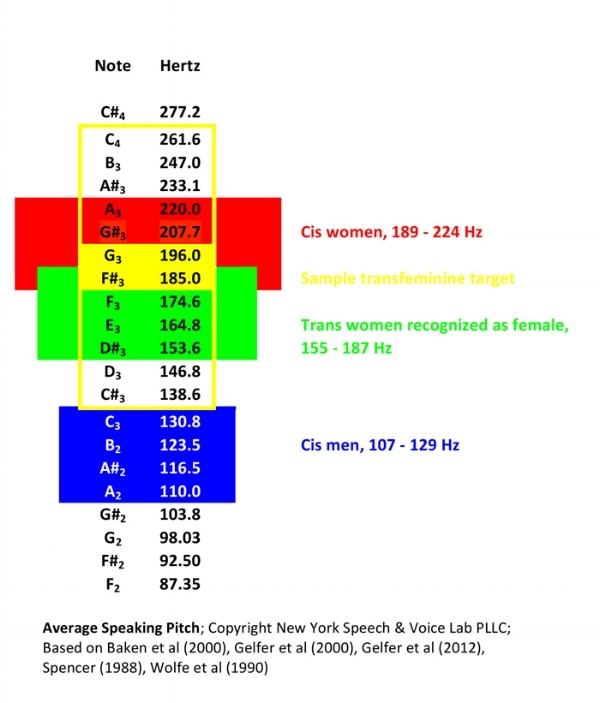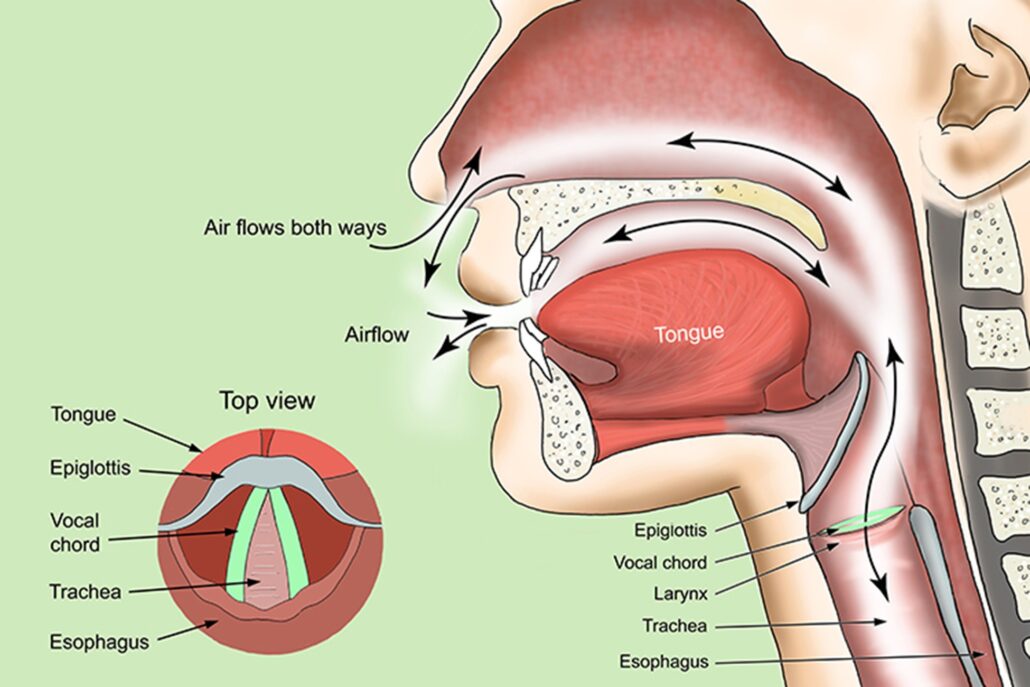
Gender-Affirming Voice Care
Gender Affirming Voice Modification is a therapeutic experience aimed at helping members of transgender and non-binary people find a voice that feels most authentic to their gender identity. At Becker ENT, we offer gender-affirming voice therapy with a trained speech therapist who specializes in voice. Our voice therapy goals are to help gender-diverse clients learn how to use their vocal instrument in a way that feels most affirming to them, both in their everyday life and in achieving their specific voice goals.
The voice is a complex instrument that can vary from day to day based on external factors such as exhaustion, allergies, or illness. Facial expressions, voice quality, and even the ability to maintain eye contact can influence one’s voice. Understanding how your vocal instrument works from a physiologic standpoint gives you more control over what you sound like each and every day. Through individualized, one-on-one sessions, our skilled therapist will teach you techniques, including vocal exercises, and provide direct feedback, allowing you to practice exercises that will help you achieve your voice goals. Consistent practice and relaxation exercises will form an integral part of your treatment plan. By undergoing Gender Affirming Voice Modification at Becker ENT, you’ll gain the tools you need to speak confidently and authentically, no matter what the situation.
As speech therapists who specialize in voice rehabilitation, we have an in-depth understanding of how voice is made. The way a person’s voice sounds has to do with many different elements—from the airflow to vocal fold closure/vibration to how we shape our throats and mouths. Believe it or not, we have control over every individual element that goes into creating a voice. Modification of any of these elements can greatly change how a speaker sounds. Our aim as voice therapists is not to tell you how you should sound, but to help you learn to use your vocal instrument to sound the way you want.
Gender-Affirming Care for the voice can be generally described as learning the tools to find an affirming vocal quality. However, Gender-Affirming Voice Modification (also known as Transgender Voice Modification) is often categorized into three sub-sections: Voice Feminization Therapy for Transfeminine Speakers, Voice Masculinization Therapy for Transmasculine Speakers, and Gender-Nonconforming voice therapy for Non-Binary Speakers. Societal vocal and communication norms are traditionally deemed “feminine” or “masculine” voice characteristics. While following these norms is not necessary, it is helpful to understand how they play into vocal quality to inform any decision about voice modification.


Transfeminine Speakers
Voice feminization is one of the most commonly sought gender-affirming voice care services for transgender individuals, including non-binary people who lean towards the feminine end of the gender spectrum. This is because those assigned male at birth (AMAB) and who have gone through puberty have experienced the effects of testosterone, including a lengthening and thickening of their vocal folds that is irreversible without voice surgery, such as voice feminization surgery.
Voice feminization therapy becomes paramount in these situations as hormone treatments alone cannot achieve the desired feminine voice quality. Transwomen going through hormone therapy alone will not change their voice. This is not the case for transmasculine speakers.
Research has found many ways to modify speech to be perceived as more feminine. These studies not only analyzed voice quality and average pitch but also looked into facial expressions and eye contact. It is a combination of all these aspects that produces what listeners deem as feminine-perceived speech.
Pitch
The pitch of the voice is determined by factors such as the tension of the vocal cords and the state of the voice box. A higher pitch is the most common goal of transfeminine speakers. Studies show that the average cisgender feminine speaking pitch is about an octave higher than the average cisgender masculine speaking pitch. Therefore, working with a trained clinician for Transgender Voice Therapy to achieve a higher voice pitch can be a key component of the transition process toward an authentic voice.

For an AMAB individual who has gone through puberty, testosterone has caused physical changes that thicken the vocal folds and thus deepen the voice, leading to a masculine vocal range. These physical changes are irreversible without surgery such as voice feminization surgery. Hormone treatments will not alter the current voice, but with consistent practice during Transgender Voice Therapy sessions, you can learn to use the muscles of the voice to adjust pitch to a more feminine range. It’s vital to learn this from a trained clinician to prevent vocal fatigue or lasting voice disorders and to ensure vocal health.
Resonance
The definition of resonance is the reverberation of sound in space. When we speak, sounds resonates in our chest, neck, and head. If you have a larger head and neck, your voice may naturally sound large and full and booming. If you have a smaller head and neck, your voice may sound smaller and younger. Compare the difference in sound between a violin and a cello. They are very similar instruments but with different body sizes, making the same note on each instrument sound different (due to resonance). The resonance becomes an essential part of the treatment plan when undergoing voice transition. Having a brighter, smaller, more forward resonance, almost like a breathy voice, can give a sound that is more often deemed feminine, regardless of pitch, thus influencing gender perception.
Other communication characteristics
Besides resonance and pitch, there are several other communication characteristics that can be modified. These include articulation, intonation, loudness level, non-verbal communication choices such as facial expressions, and word choice. Speech therapy may incorporate vocal exercises and relaxation exercises to improve these areas. Addressing these vocal qualities with a skilled speech therapist can improve the overall quality of life and communication for gender-diverse clients seeking Transgender voice therapy. The rise of online voice therapy also makes it easier for individuals to access these services.
Transmasculine Speakers
AFAB individuals (individuals assigned female at birth) who identify as transgender men or non-binary people leaning towards the masculine end of the gender spectrum may choose to undergo testosterone hormone therapy as part of their transition process. Testosterone therapy can cause the vocal folds to thicken, resulting in a lower-pitched voice that aligns with a cisgender male’s typical pitch range. This change in vocal pitch is generally irreversible and occurs within the first 6–12 months of therapy.
Due to this effect of testosterone on the voice, voice therapy for individuals wishing to masculinize their voice tends to be less sought out. But it is not without its benefits.
A speech therapist who specializes in transgender voice therapy can help individuals develop a more masculine communication style. Like with voice feminization, other vocal characteristics such as resonance, articulation, nonverbal communication, and loudness level can be modified to create a more authentic voice that better aligns with an individual’s gender identity. By working on an action plan with a speech therapist, transmasculine individuals can improve their vocal health and overall quality of life. The therapy may also help with managing any potential voice disorders that could arise from the effects of hormone treatments.
Non-binary And Gender Non-conforming Speakers
If you do not feel that your gender aligns with either female or male and you wish for your voice to reflect a non-binary self, understanding the traditional gender-based norms in communication and learning to control your vocal instrument is the most effective way to find a voice that feels congruent with your identity. Some gender-diverse people may want to be able to sound more feminine in some settings and more masculine in other settings. The vocal instrument is amazing, and understanding how to “play” it correctly will allow you the freedom to be fluid with your vocal presentation.

TELEHEALTH
Gender-Affirming Voice Telehealth
Telehealth services are offered to patients seeking gender-affirming care services. These services have been shown to be just as effective as in-person therapy without the barriers that come with an in-person office visit. With telehealth, your speech-language pathologist (SLP) will work with you to sound like your most authentic self.
This is done through exercises targeting:
- Vocal resonance
- Voice pitch range
- Volume
- Tension release
- Musicality/ inflection.
Advantages of telehealth:
- Eliminates the need for travel
- Can be more cost-effective
- Saves time
- Can be conducted anywhere
- Improves access to care.
Telehealth services can be delivered in several different formats. The American Speech-Language-Hearing Association (ASHA) defines these services as:
Synchronous — Services are conducted with real-time audio and/or video connection to create an experience similar to a traditional in-person encounter. Synchronous services may include, for example, connecting a client or a group of clients with a clinician, or they may include consultation between a clinician and a specialist. Telehealth visits, virtual check-ins, e-visits, or virtual consultations are examples of synchronous services.

Asynchronous — Information, images, video, or data are saved and transmitted for viewing or interpretation at a later time. Examples include transmission of voice clips, audiology testing results, patient education materials, or outcomes of independent client practice. Store-and-forward or chat-based interactions are examples of asynchronous services.
Hybrid — A combination of synchronous, asynchronous, remote patient monitoring (e.g., wearable sensors, mobile apps), and/or in-person services are implemented to meet the needs of the individual client. An example includes using an online or a mobile app to share asynchronous information between the client and the clinician between synchronous in-person or virtual sessions.
At Becker ENT, we generally use a synchronous or hybrid approach.
Acoustics
Research has shown that acoustic measurements can be measured accurately via a telehealth interface. The use of an interface will vary by organization and may also vary by the patient and/or SLP internet connection. Some commonly used interfaces include Zoom, Microsoft Teams, Facetime, and Google Hangouts. Additionally, medical providers often use HIPPA-compliant interfaces including Doxy or BlueJeans so patient information remains protected.
Environment
It is important to conduct a telehealth session in a safe and quiet environment. For safety reasons, your provider may ask where you are conducting the session in case of an emergency. To ensure you get the most out of your appointment, it is best to conduct the session in a quiet, well-lit, private space. This will ensure minimal distractions. If you are conducting the session outside your home, please be sure you are stationary and with a good internet connection.
Your SLP will walk you through the steps of each exercise from the comfort of your own home. As long as you have a stable internet connection, effective and efficient healthcare is just a click away!
SINGING VOICE
Gender-affirming Singing Voice Care
Do you want to be able to sing higher or lower? Maybe you want to sing without tension and strain? Perhaps your goal is to develop a different vocal register/mode, and you have never sung in M1 (chest voice) or M2 (head voice/falsetto) before and want to develop these areas. Or do you want your singing voice to sound more gender-neutral, fluid, masculine, feminine, or just more aligned with your gender identity? We can help with that!
With gender-affirming singing voice care, our team of voice-specialized SLPs will evaluate your speaking and singing voice and work with you to develop and meet your voice goals.
Some goals for voice care may include:
- Establishing a daily singing voice warm-up routine.
- Decreasing body tension through musculoskeletal release through circumlaryngeal massage and stretches.
- Coordinating the vocal subsystems (respiration, phonation, and resonance) through evidence-based exercises including SOVTEs (semi-occluded vocal tract exercises).
- Understanding/training the different registers/modes of the voice such as M1 (sometimes referred to as “chest”), M2 (sometimes referred to as “head/falsetto”), or using a “mix” of these modes while singing.
- Techniques to alter vocal tract shaping (sometimes called acoustics or resonance) in order to be perceived as more/less feminine, masculine, or non-binary.
- Finding a comfortable pitch with a wide range in which to sing as well as repertoire (songs) that fits that range.

